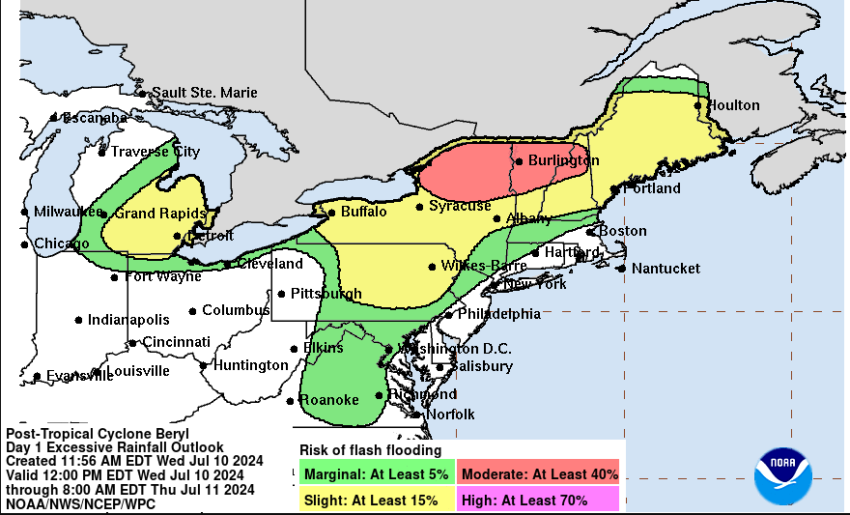Hurricane Beryl has left a significant mark across multiple states, producing heavy rain, flooding, and widespread power outages. This article synthesizes updates from various reliable sources, offering a comprehensive overview of the storm’s impact and the ongoing recovery efforts.
The Deluge of Rainfall
National Weather Service (NWS) Weather Prediction Center:
Over the past 72 hours, Beryl has produced a large swath of heavy rainfall stretching from eastern Texas through the Mid-Mississippi Valley towards the Great Lakes. The rainfall has been intense, with predictions for additional rain affecting the southern Great Lakes, central and northern New York, and northern New England. This has led to significant flood risks in these areas.
Power Outages and Recovery Efforts
In Houston, more than 1.3 million CenterPoint Energy customers were still without power on Wednesday morning, nearly two days after Beryl hit. CenterPoint Energy is under scrutiny for its handling of the outages and communication with customers. The company has restored power to over 850,000 customers, and ongoing efforts aim to restore service to at least one million by Wednesday. Despite these efforts, many customers are questioning the reliability of CenterPoint’s outage maps and the timeline for full power restoration.
Amid the sweltering heat, many Texas residents, including those in Tomball, are resorting to sleeping in their cars to stay cool. Hotels are fully booked, and fast food chains are among the few places with power, creating long lines for essential services. Beryl, the earliest Category 5 hurricane on record, has caused widespread devastation, including in Jamaica, Grenada, and the U.S. Economic losses in the U.S. alone are estimated between $28 and $32 billion.
Safety and Precaution Measures
FEMA urges residents in the affected areas to take precautions against extreme heat and to use generators safely. With millions still without power, it is crucial to stay hydrated, avoid high-energy activities during peak heat hours, and seek cooling centers if necessary. Residents are also advised to keep refrigerators and freezers closed, disconnect appliances to avoid power surges, stay off roads to allow emergency workers to operate, and avoid floodwaters and downed power lines.
Key Updates and Recommendations
Flooding and Rainfall: Continued heavy rainfall is expected in the northern regions, increasing flood risks.
Power Restoration: Efforts are ongoing, but many residents remain without power, prompting the need for alternative cooling solutions.
Safety Measures: Residents should follow FEMA’s guidelines to ensure safety during power outages and extreme heat conditions.
Resources
NWS Weather Prediction Center Storm Summary
CenterPoint Energy Outage Map: Check local updates on power restoration efforts.
211 Texas Extreme Heat Cooling Centers
FEMA safety guidelines for power outages and extreme heat.

